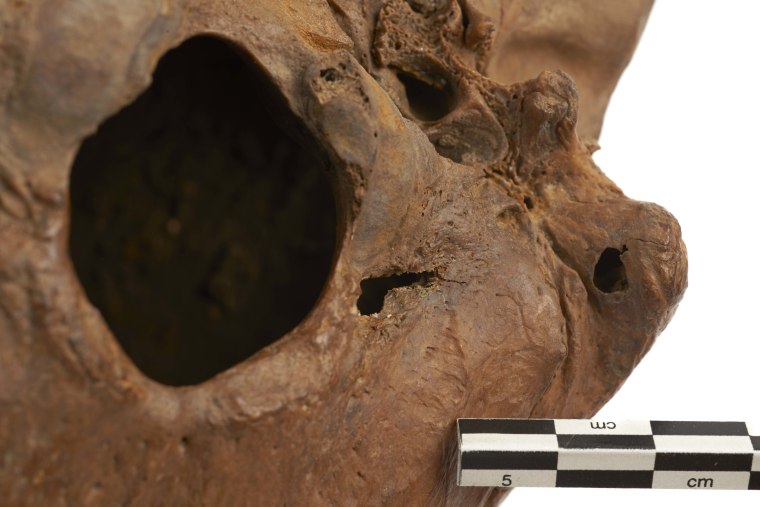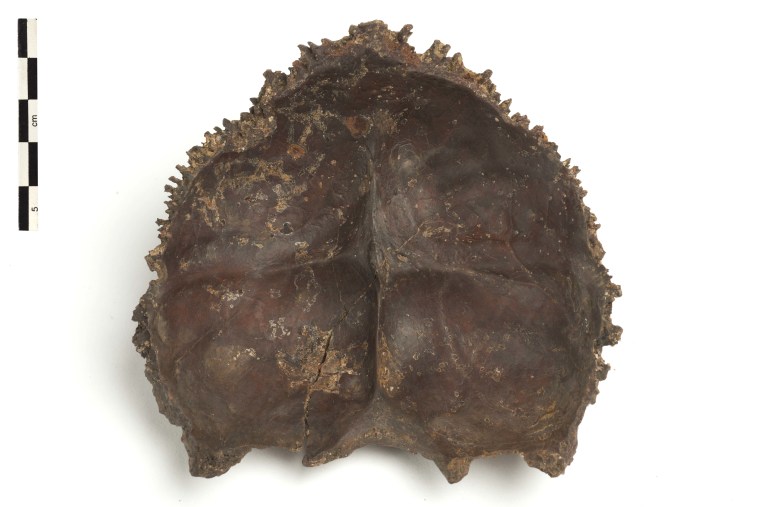The decapitated heads of defeated Roman gladiators who competed in London 2,000 years ago were thrown into an open pit near the city walls and gnawed on by dogs, a new report suggests.
The skull parts, and a part of one leg bone, discovered 25 years ago, belong to about 40 young men around the age of 30. "We don’t know where the rest of them are," Rebecca Redfern, curator of human osteology at the Museum of London, told NBC News.
Redfern's new analysis shows evidence of injuries that have healed — in bones from otherwise healthy humans — suggesting that the men were engaged in violent activities, perhaps as gladiators in Roman Londinium between 70 and 200 A.D. They may also have been victims of the Roman practice of head-hunting, when soldiers brought back just the heads of warriors they defeated.

The heads were then "put in these pits that were kept open," said Redfern, who published her findings this week in the Journal of Archaeological Science this week. "Very grisly."
"It’s the person that’s partially chewed by dogs that’s my particular favorite," Redfern said, referring to the one jaw sample which showed teeth marks — evidence of canine gnawing — that were inflicted after death.
The collection of bones was unearthed in 1988, and excavated 1989 by the Museum of London. A building now stands over the dig site. "I often walk by it on the way to work — it’s next to a bookshop," Redfern said.
Back when the region belonged to the Roman empire, the site was an industrial area where craftsmen worked on leather and horn products. In the middle of the bustle were the death pits, with skull bones tossed in.
"[The workers were] not very worried that they have this open pit with a dog chewing on someone’s head next to where you’re working," Redfern said. "But that’s Rome for you."
Nidhi Subbaraman writes about science and technology. You can follow her on Facebook, Twitter and Google+.
